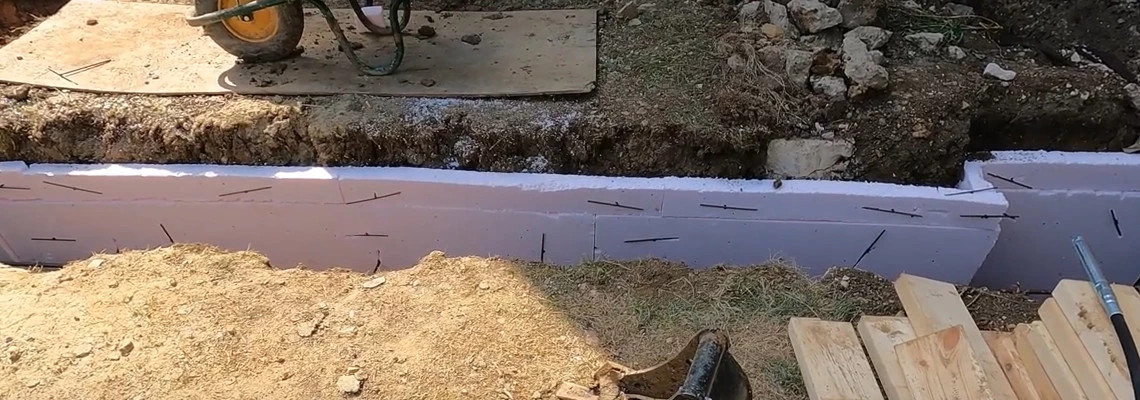
CLAYMASTER INSTALLATION GUIDE*
Claymaster is a below ground side clay heave protection board and it may come as alternative names: Heaveguard, Clayshield, Claylite, EPS, Expanded Polystyrene, Compressible Fill or lateral Clayfill. Whatever the name, it does the same job - it protects against heave. Its installation does not require any special knowledge. In this article we will explain when the claymaster is required and how to install this anti-heave board.
 TABLE OF CONTENTS
TABLE OF CONTENTS
DETERMINATION OF CLAYMASTER BOARD THICKNESS
CLAYMASTER PROTECTION BOARD ALTERNATIVE
WHEN IS CLAYMASTER REQUIRED?
Claymaster is generally required on the inside face of external ground beams. However, in ground beam and pile beam applications it can be used on both faces of the beam. The appropriate thickness the product required is determined by the predicted lateral movement. Most common thicknesses for Claymaster are 50mm and 75mm.
Typically the material will be placed against the face of the beam after striking of the formwork and prior to backfilling. Compressible fill must not be used where the depth of in situ concrete is greater than 600mm in ground beam construction. As the product is confided underneath concrete ground beams and placed at the vertical face of deep trench foundations and has suitable durability, maintenance is not required.
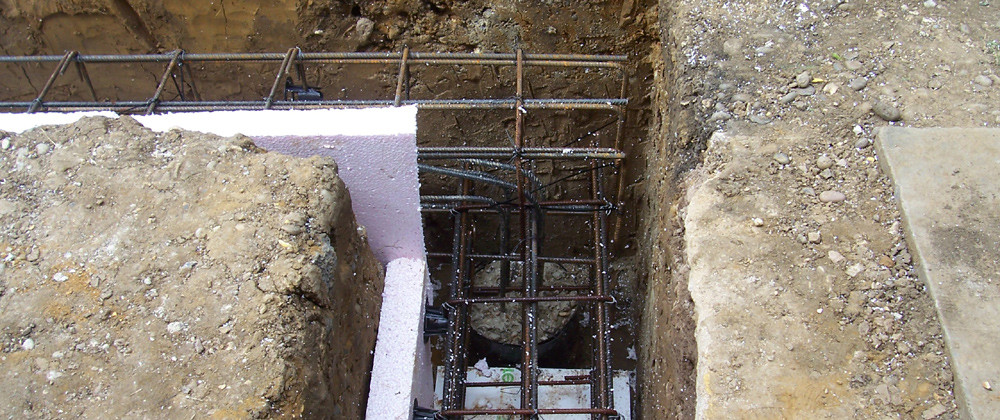
Picture credit:micropilinggroup.co.uk
CLAYMASTER NEAR ME
Since Claymaster is so popular, it is readily available in well known stores near your location such as Selco or Travis Perkins. Buying claymaster from online stores like us is also an option. You won’t have to drive around and look for parking space. More importantly, we will deliver the anti-heave boards to your doorstep.
CLAYMASTER COLOUR / SIZE
Claymaster is supplied coloured pink to easily differentiate from standard White EPS. However boards can be also coloured green or cream for brand identification on site and are available in 8 different thicknesses such as 50mm, 75mm, 100mm, 125mm, 150mm, 175mm, 200mm and 300mm.
Heaveguard made by Cordek and Claylite from Kay-Metzeler come green in colour, Claymaster from Jablite come pink and Clayfill made by Stylite come yellow.
Panels are delivered either in size 2400mm x 1200mm (8' x 4') or 2400mm x 600mm (8' x 2').

DETERMINATION OF CLAYMASTER BOARD THICKNESS
The required thickness of the claymaster will vary depending on the potential ground movement and the allowable pressure limit of the foundation substrate. It is important that the specified thickness of clay heave protection board required to resist the pressures exerted from the ground movement is correctly calculated. Below calculation breaks down the thickness of clay heave protection needed. The specified clay heave board thickness should be:
T = 100 x (H/C) + 10
T= Thickness Required
H= Predicted maximum ground movement
C= Compressive strain (%) under maximum pressure exerted on foundation
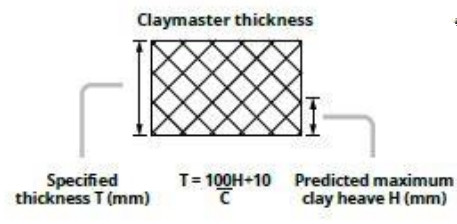
The table below shows thickness of Claymaster required to meet the recommended void dimensions given in the NHBC guidance.

Claymaster void dimensions
CLAYMASTER INSTALLATION
Ground heave side panel such as Claymaster, Clayfill, Claylite or Heaveguard is used for vertical installation. Claymaster is lightweight and easy to install, however this anti-heave product is designed to be installed by a competent general builder, or a contractor, experienced with this type of product.
1.The trench should be excavated as normal but taking account of the thickness of Claymaster to be used. Normally the inside face, should be lined with Claymaster, ensuring that the material is fully supported to the required depth.
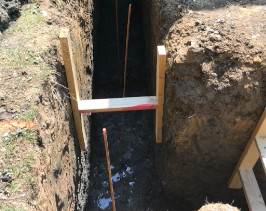
2.As general, the clay heave protection board is laid closely butted on the prepared excavation, ensuring that the whole area of the ground beam is covered. Small gaps between boards should be filled with polystyrene pieces or must be backfilled with a granular material.
3.Claymaster must be adequately supported and restrained to prevent movement during concrete placement. In some cases claymaster fixings are used. Claymaster fixings are easy to use. You can push the long pin through the Claymster sheet and into the soil, the shorter pin fixes securely in place by sinking completely into the polystyrene. Generally speaking, Claymaster fixing pins can generally be placed by hand.
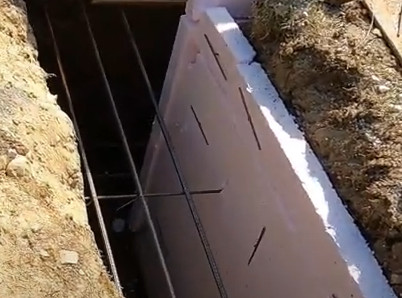
4. Plywood sheeting may be required to provide external support to the Claymaster.
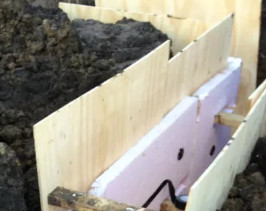
5. Suitable spacer pads or blocks must be provided for steel reinforcement. They should be sufficient to reduce the pressure on the Claymaster to less than 15N/m², this prevents penetration into the surface of the Claymaster.
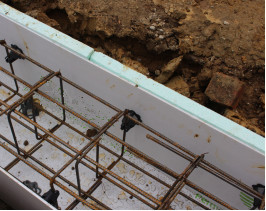
Picture credit: cordek.com
CLAYMASTER PROTECTION BOARD ALTERNATIVE
Cordek® Heaveguard – 50mm | 75mm | 100mm | 200mm | 300mm Coloured GREEN (alternative product that replaces Claymaster)
Kay-Metzeler® Claylite – 50mm | 75mm | 100mm | 125mm | 175mm | 200mm | 300mm Coloured GREEN (alternative product that replaces Claymaster)
Stylite® Clayfill – 50mm | 100mm | 150mm | 200mm Coloured ORANGE (alternative product that replaces Claymaster)
Max-frank® Clayfill – 50mm | 75mm (alternative product that replaces Claymaster)
Realated articles:
160mm DUFAYLITE CLAYBOARD vs 160mm WHITEROCK HEAVE STOPPER
Collapsible void former installation guide
Foundation heave problems. Heave Symptoms
Don't let your foundation fail
Understanding Dufaylite Honeycomb Claybord Void Former
Filcor lightweight structural fill
*All the information provided in the content published on Insulationgo blog is for informational and educational purposes only. Insulationgo LTD makes every effort to ensure the accuracy and timeliness of the content, but we do not assume any responsibility for any errors or omissions.
The information presented on this blog should not be considered as professional advice or a substitute for consulting relevant experts. Before making any purchase decisions or taking action based on the information presented here, it is strongly recommended to contact the product manufacturer directly to verify the details and ensure its suitability for your specific needs.
By using this blog, you acknowledge and agree that Insulationgo LTD shall not be held liable for any damages, losses, or inconveniences arising from the use or reliance on the information provided herein. This limitation of liability applies to all users of the blog, including but not limited to visitors, readers, and subscribers.










































































































